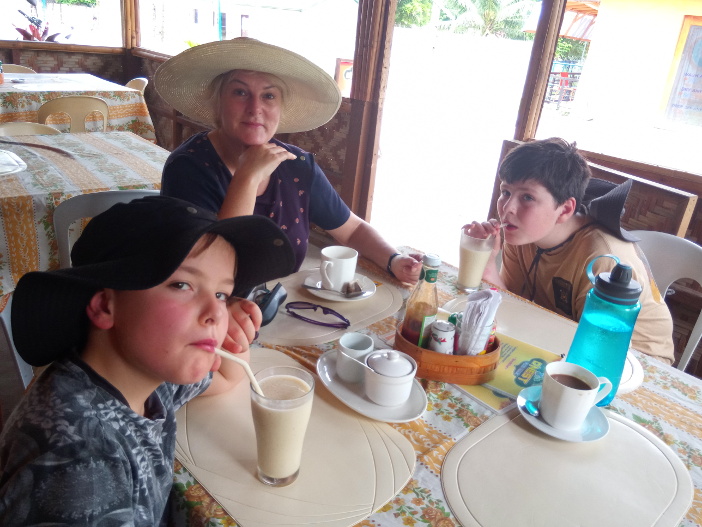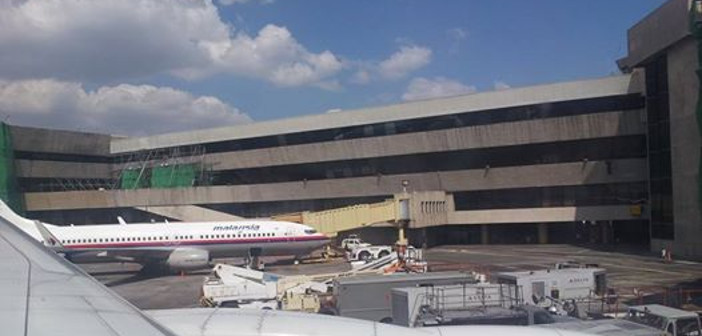I have a rule for traveling, which I learned from an ex-girlfriend. Here it is:
“On the first day in a new place, you’re allowed to make a mistake.”
This may seem mystifying to more laid-back and self-confident people, but I find it tremendously liberating. It means I don’t spend the rest of my holiday fuming and fretting over a schoolboy error, wasted money, or breach of local etiquette on day one. And it’s only fair, given that tiredness from travel and disorientation in a new environment can lead to lapses of judgment which you might otherwise avoid.
However, I’m still irritated by having been scammed almost immediately on arrival at Manila’s Ninoy Aquino International Airport (NAIA), so I’m sharing the story with you in the hope of saving others from the same fate.
On our last epic trip, to Taiwan’s remote Lanyu Island, we traveled out in stages, then returned in one crazy two-day journey, arriving home exhausted. So on this occasion, we decided to go all the way to our furthest-flung destination, Moalbaol on Cebu island, in a single leg, and come back more slowly. As a result, we ended up flying into Manila at 2am, with a 5am flight to catch to Cebu.
This seemed like plenty of time to clear immigration, get our baggage, and maybe have half an hour’s sleep before the next flight. What I had not realized though is that NAIA has only recently escaped the label of “the World’s Worst Airport”, a title it held from 2011 to 2013. An improvement program means that it’s now only the 8th worst in Asia, but it was still chaotic enough to cause us problems.
We landed on time, but then the pilot announced that another plane was occupying our berth and we had to wait. (Why we couldn’t be found another berth was never explained.) We waited on the tarmac for over an hour, before finally disembarking. To give credit where it’s due, the airport staff moved us to the front of the queue for immigration, but then a painfully long wait for our baggage left us with very little time to get to a different terminal for our next flight. Even worse, as we waited I gazed with horror at a sign which seemed to suggest that the shuttle bus to the other terminals only ran every half hour.
As our bags finally appeared we snatched them from the carousel and ran the length of the airport to the mysteriously hidden tunnel which led to the shuttle bus. At the desk, though they told us that the next bus wasn’t due until 5.30am – half an hour after our flight took off.
An official-looking man with a clipboard and an ID badge told us not to worry, to come with him. He helped us with our bags and led us back to the main terminal area. Another feature of NAIA that I hadn’t realized is that although the terminals share a single runway, they are miles apart. We would need to take a taxi along the skyway, the helpful man told us, and he took us to a desk, where they held out a list of prices and said it would cost PHP 1,700. I gabbled thanks and shoved the money into their hands.
It was only when we got outside that two facts dawned on me. Firstly, we had been charged over USD 30 for an 8km journey. Secondly, we could have just stepped outside the terminal building and jumped into a taxi, which would have charged us less than PHP 200. Instead, we stood waiting for our car to arrive, while the clock ticked down and my rage built. My mood was not improved when the driver had the gall to ask us to pay the toll on the skyway, and then solicited a tip at the end of the journey. “I’ll give him a tip…” my wife growled.
Still, we made our flight. As scams go, hanging round pretending to be an airport employee is pretty mild compared to the notorious NAIA trick of sneaking a bullet into your luggage then blackmailing you. And it wasn’t a huge financial loss for us, while the money must have mattered a great deal in an impoverished country. Perhaps what it brought home to me is that, for all the frustrating bureaucracy, we are rarely hustled in China, whereas everyone in the Philippines wanted to get money out of us. But it put me in a sour and suspicious mood when we arrived in Cebu and had to book transport to Moalboal (a 90km, 4-hour journey which cost us PHP 2,500.)
Fortunately, on arrival in Moalboal, our experience of the Philippines vastly improved. In my next post, I’ll explain why.

A bleary but relieved brunch in Moalboal
Photos: Kang via Wikimedia Commons, Andrew Killeen





2 Comments
First. Regarding your waiting to disembark because there is no available “berth” well it always happened even in the so called best airport in the world. Even in the first world country it always happen. I should know cause I have experienced this many times as my expectations to those acclaimed best airport in the world is so high and ending up in frustrations. Second. If its your first time in a country you should plan you trip very well, because you are not familiar with the airports the travel time and so on and so forth. Scammers are every where in the world..if you are a real smart traveller and well travelled you should not be falling for their tactics. Maybe in your country there are none or doesn’t exist well then bravo. But scammers are everywhere. I don’t know how many time you have travelled or where you have been but you should be smart enough to know all these. Philippines is a beautiful country and they are trying their best to improve their airports. Its the only airport so far that Ive seen where they have CCTV where you can see how they place you luggage in the conveyor. To avoid the issues of the bullet planting. All the airports have their flaws even how perfect they are still shits happens. So we travelers cannot judge them as the best or as the worst airport because of justr one unfortunate experience. Next time plan your trip very wel and stop blaming the airports if you were a victim of scammers, its not their fault if you are not smart enough .. .do some research before you travel to a non familiar place.
Hi Brenda, thanks for your comment! Firstly, if you read the post carefully you’ll see that it’s not me who described NAIA as the “worst airport in the world.” It was voted as such by travelers from around the world. You’ll also notice that I have commented on its improvement, and that it is now considered only the 8th worst in Asia.
I’m not sure that we should accept scammers as just a fact of life. It’s good that they have taken action to prevent the bullet scam, but that really would seem to be the minimum standard travelers should expect, rather than something NAIA is to be praised for. It’s not uncommon to be ripped off by taxis when leaving the airport, but less common for the scammers to be within the airport itself.
I travel with my family a great deal and we always try to research our destinations. My purpose in writing this post, as stated above, was to warn other travelers, so that when they research NAIA they will be made aware of common scams. You can’t reasonably say it’s up to travelers to research their destination, then criticize someone for putting the information out there.
Finally, you will note from my last sentence that my experience of the Philippines improved greatly once we reached Moalboal. I always try to give a fair and balanced account of anywhere I visit.